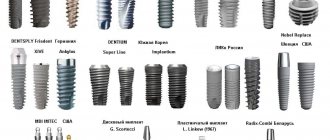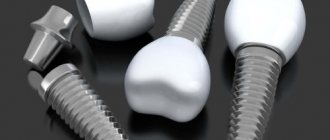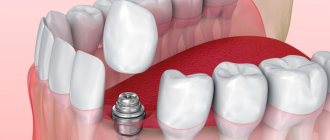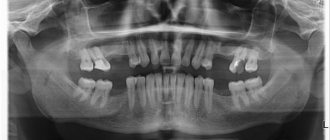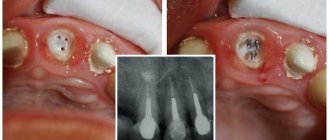In the modern world, methods and methods for solving dental problems have been significantly updated and improved, which makes it possible to cope with most problems that were previously inaccessible. For example, complete restoration of a normal and close to the physiological structure of the upper or lower jaw has become available, since many dental clinics already have in their arsenal the latest techniques and highly qualified doctors with the relevant knowledge and skills.
Innovative technologies used in the process of dental restoration are aimed at long-lasting results and future patient comfort. Dental implantation is considered the optimal solution for restoring one or more dental units lost for any reason. However, installation of an implant requires careful preparation of the patient regarding the condition of the bone tissue. Its insufficient volume creates a significant obstacle to the restoration of the dentition. It should also be noted that bone deficiency is present to one degree or another in 85-90% of all patients, so its restoration is one of the initial and most important stages in the implantation process.
What is one-stage dental implantation?
Single-stage, or instant, implantation is a type of dental restoration where immediately after a tooth is removed, an implant is installed in its place, and all this happens during one visit. Single-stage implantation is most in demand when restoring teeth in “visible” areas, that is, where aesthetics are so important, namely in the smile area.
From a functional point of view, implantation immediately after tooth extraction is more preferable than a two-stage technique in cases where it is necessary to simultaneously restore several teeth. In such a situation, the instant technique significantly reduces the patient’s rehabilitation time, and also allows the installation of a temporary structure with which the patient can chew without problems and immediately.
Installing an implant immediately after tooth extraction - types of surgery
There are three main types of this procedure for restoring teeth immediately after their removal. The first is instant implantation, when after installing the implant, the gums in the place of the just extracted tooth are sutured, and further manipulations are performed only after complete healing. In the second case, during immediate implantation, in addition to the implant itself, the patient is also fitted with a gum former, which helps in the future to preserve the so-called “pink aesthetics”, that is, the natural and neat appearance of the soft tissue at the implantation site. Gum formers can be standard or custom-made; which one to choose depends on the situation.
The third type of one-stage jaw implantation is the installation of an implant in place of an extracted tooth with immediate loading of the latter with a temporary crown. After the implant has healed, this temporary crown is replaced with a permanent one. This subtype of instant implantation is by far the most effective from an aesthetic point of view, as it allows you to fully restore the pleasant appearance of your smile in one visit, so that the patient does not have to walk around with a “hole” in the dentition for the entire healing period. This type of express implantation is most in demand when restoring teeth in the smile zone, that is, in the anterior region.
Causes of jaw bone deficiency
The effectiveness of a labor-intensive procedure aimed at maximizing the improvement of the jaw depends on the volume of bone tissue, which tends to deteriorate during a person’s life for the following reasons:
- inflammatory processes in a decaying tooth;
- injuries of the maxillofacial apparatus;
- destruction of bone tissue due to surgical removal of a tooth, that is, most dentists perform this operation with the capture of the alveolar process or part of it;
- resorption of bone tissue due to sharply reduced pressure on it due to the absence of a tooth;
- congenital deficiency, which is manifested by malocclusion, speech defects, as well as aesthetic nuances.
Bone deficiency can be noted both in height and in width of the anatomical part bearing the dentition. Almost all types of reduced volume of the bones of the lower or upper jaw can be restored using modern methods. Of course, there are some disadvantages of bone grafting , but, in this case, the end justifies the means.
Immediate dental implantation and its benefits
Ensuring a beautiful appearance, especially in the frontal area, is no less important than restoring the functions of speech and chewing, and the already mentioned “pink aesthetics,” that is, a neat contour of the gums, is no less important than the correctly selected color and shape of an artificial tooth. The advantage of one-stage jaw implantation is that, regardless of whether we load the implant with a temporary crown or install a gum former, we maintain the original contour of the soft tissues. In the case of two-stage implantation, this circuit has to be restored from scratch after the implant has completely healed, which not only forces the patient to endure inconvenience during the rehabilitation period, but also does not guarantee an ideal result in the future. As for monetary costs, the price of one-stage implantation in Moscow does not exceed the cost of surgery using the classical method.
Preparation for implantation
Simultaneous dental implantation is a complex procedure that requires preliminary diagnosis of the condition of the oral cavity for dental caries and the presence of various inflammatory diseases. Implantation can be started only after complete treatment. To obtain reliable information about the height or level of the bone tissue into which the implant is planned to be implanted, it is necessary to take an X-ray of the teeth. If it turns out that there is not enough bone tissue to perform the operation, the doctor will first augment it.
What are the contraindications to immediate dental implantation?
Unfortunately, immediate implantation is not always the best option, since in some cases it is not possible to install an implant immediately after tooth extraction. For example, immediate implantation is not carried out when inflammation is observed at the site of the extracted tooth. Also an obstacle are standard contraindications to implantation, be it decompensated diabetes mellitus, severe bruxism, or uncontrolled grinding of teeth, some other chronic diseases in the acute stage or relapse, osteoporosis, heart attacks suffered less than six months ago, strokes and hypertensive crises. Smokers are also at risk. Although smoking is considered a relative, and not an absolute, contraindication, it may well cause implant failure.
In a number of other cases, immediate installation of an implant in place of an extracted tooth is possible, but immediate loading of it with a temporary crown is, unfortunately, not. Such situations include, for example, traumatic tooth extraction, a small volume of bone and soft tissue in the area where the implant is installed and its insufficiently reliable fixation in the socket, as well as a soft bone structure. In such cases, an aesthetic result is achieved by installing a gum former and attaching a temporary orthopedic structure to the teeth adjacent to the defect, hiding the “hole” in the dentition.
Photos before and after implant installation
Which implant is better to place? Let's compare Dentium, MIS and Nobel implants
The optimal solution for tooth loss is dental implantation. The cost of this procedure varies greatly, largely depending on the implant chosen. Artificial roots for future teeth can vary in cost several times.
Let's look at 3 common implantation systems from different price categories.
Implant | Dentium | M.I.S. | Nobel |
Line of implants | Dentium SuperLine | MIS M4, MIS Seven | Nobel Activ |
Manufacturer | Dentium Co, South Korea | Medical Implant System, Israel | Nobel Biocare, Switzerland |
Survival rateStarSmile rating data is provided. The survival rate of budget implants may be overestimated due to the fact that doctors prefer to place them only under good clinical conditions. And more technologically advanced and expensive systems are installed in patients with bone grafting, chronic diseases, etc. | 98% | 97% | 99,3% |
Survival rateData provided by CosmoStom | 98,1% | 98,3% | 99% |
Lifetime WarrantyGuarantee of free implant replacement in case of rejection. | + | + | + |
VersatilitySuitable for narrow interdental spaces, etc. | + | + | + |
Atraumatic apexAre there models with a flat top, which are installed when there is a high risk of injury to the mandibular nerve or maxillary sinus? | + | + | + |
CompoundThe connection to the hexagon-shaped abutment ensures high tightness. | + | + | + |
Reviews from independent expert organizationsResearch data from the independent non-profit international scientific organization POSEIDO (Switzerland, Geneva). In 2014, the organization examined 62 implant models. | “Dentium Superline (DentiumCo., Seoul, Korea) is a sandblasted/acid etched surface. Inorganic contamination of the surface with silicon was detected. The surface is moderately micro-rough, nano-smooth, homogeneous throughout the entire body of the implant.” | “Implant surface sandblasted and acid-etched with ultra-pure 23 titanium alloy with extra low impurities. There were no signs of contamination or chemical modification of the surface." | “TiUnite (Nobel Biocare, Gothenburg, Sweden) is an anodized surface with a thick layer of titanium dioxide TiO2 (>100 nm). The surface is chemically altered by integrating large amounts of phosphorus during anodization. Inorganic surface contamination with fluorides and sulfates was also detected. The surface is microporous (pores are formed during anodization), smooth at the nanolevel with extended cracks that appear during the anodization process.” |
Other research and awards | No data | In 2015 - the best results according to the criteria for processing and cleaning the surface of implants in a medical study. University of Cologne (Germany). In 2022, the Congress of the Academy of Osseointegration (Los Angeles, USA) awarded MIS with the “CLEAN IMPLANT FOUNDATION” award - as a system with a perfectly clean implant surface | “The rough surface of TiUnite implants has been described in more than 275 publications based on the results of clinical studies involving more than 13,000 patients, using 42,000 implants and a follow-up period of up to 12 years,” the Nobel website reports and provides links to study data. |
Patient information supportAvailability of an official Russian-language website with useful information that can be understood without medical education. For patients, this is an opportunity to receive a qualified, reliable answer to their questions without repeated visits to the doctor. | — | + | + |
In the worldData on the prevalence of the implant in different countries of the world are indicated for 2022. Information taken from the official websites of manufacturers. Widespreadness indicates the recognition of the brand by doctors around the world. This factor is also important for those patients who are planning to move to another country. | Russia, China, Canada, Australia, etc. 10 countries + European Union. | 72 countries of the world | The most common brand of implants in the world. |
Own developmentsThe company develops innovative technologies in the field of implantology, and not only uses existing ones. | No data | + | + |
Surface | Rough SLA surface – sandblasting using coarse abrasive + acid etching. Proven and most widely used technology. | Rough SLA surface – sandblasting using coarse abrasive + acid etching. Proven and most widely used technology. MIS use well-known technology, but have brought its result to an ideally pure level. | Unique patented oxidized TiUnite surface |
All-on-4Prosthetics on 4 implants with complete absence of teeth | + | + | All-on-4 technology was developed by Nobel Biocare. Nobel implants are ideal for this type of treatment. |
Start of data collectionShows how long the company conducts research and observes the behavior of its implants after installation, long-term consequences and service life. | 2000 | 1995 | 1962 |
Summary | Dentium are inexpensive implants for most clinical cases. | MIS are universal implants with the cleanest surface, used when there is a risk of rejection. | Nobel - high-tech premium implants for complex clinical situations. |
Risks of instant dental implantation
To be absolutely frank, we have to admit that with one-stage implantation, the percentage of implant rejection is slightly higher than with two-stage implantation, but this percentage still remains negligible (provided that all standards are met). Moreover, this risk is justified, especially in cases where a quick, highly aesthetic result is required. In general, the risk of implant rejection when installed using one-stage technology is associated with the following factors:
- severe gum injury after tooth extraction;
- accumulation of plaque around the hole not protected by the gum;
- not very strong implant fixation;
- immediate loading of the implant with a temporary crown.





